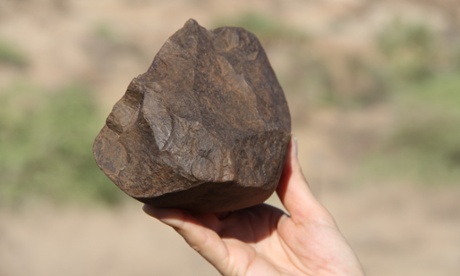You report (Stepping back 3.6m years: footprints yield new clues to humans’ earliest ancestors, 14 December) that Marco Cherin supposes from features of his find that other males in the species concerned, like gorillas, had multiple female partners. It is not the main conclusion that can be drawn from this, though it is usual for males to assume that they, in the past, would have been the one with several wives. The existence of family groups with one dominant male and several wives means that there would be many more males with no partners, circling aggressively round the family groups, attempting to displace the fathers, possibly, like lions, eliminating the offspring of a displaced male. It is not a nice ancestry. It is one in which females have little agency in the selection of mates. If this is, sadly, a strand in human development, it explains a lot about the behaviour of some males nowadays.
Penelope Stanford
New Ash Green, Kent
• Join the debate – email guardian.letters@theguardian.com
• Read more Guardian letters – click here to visit gu.com/letters










